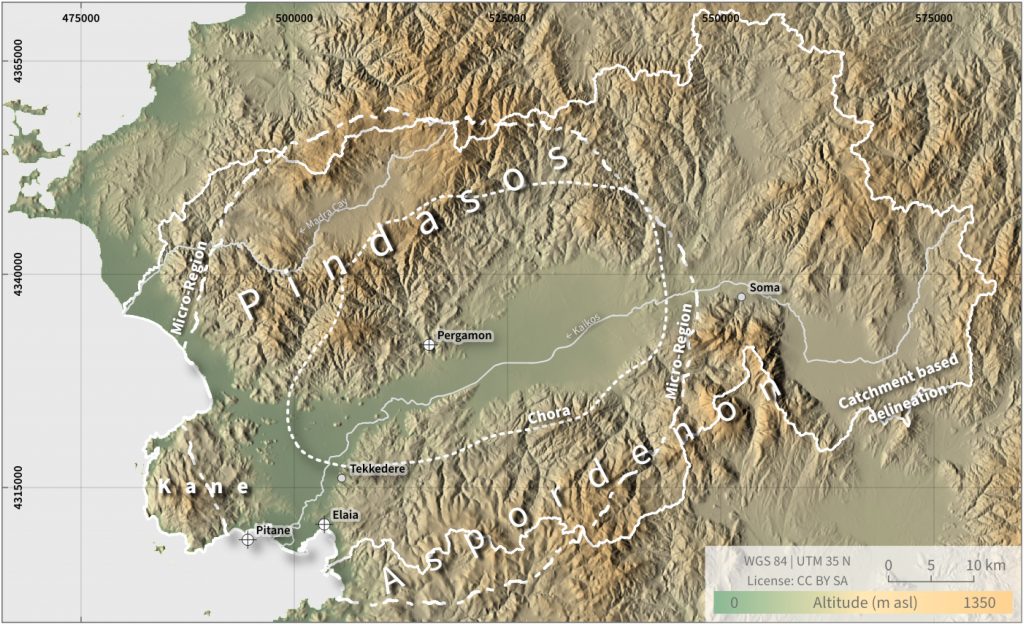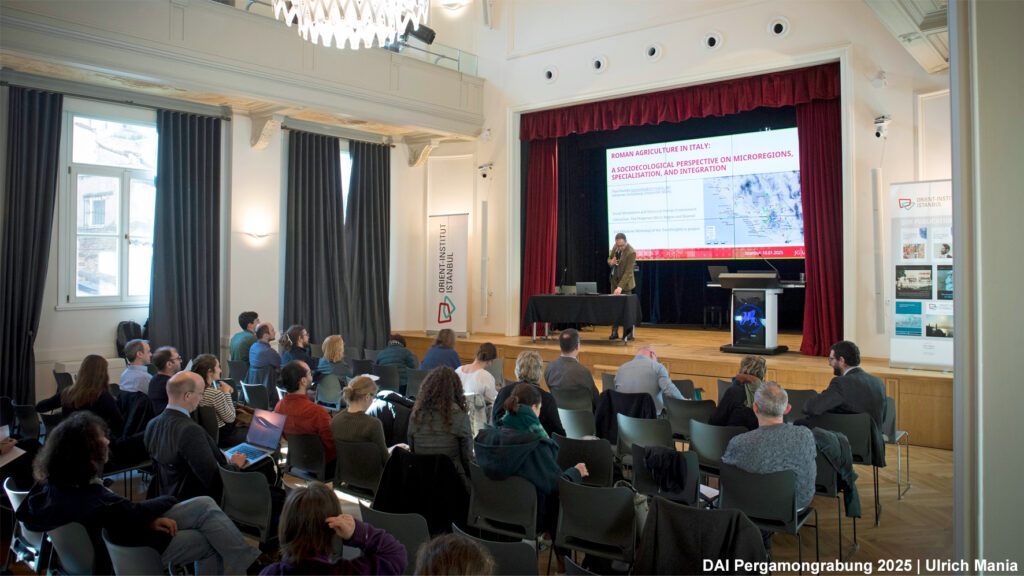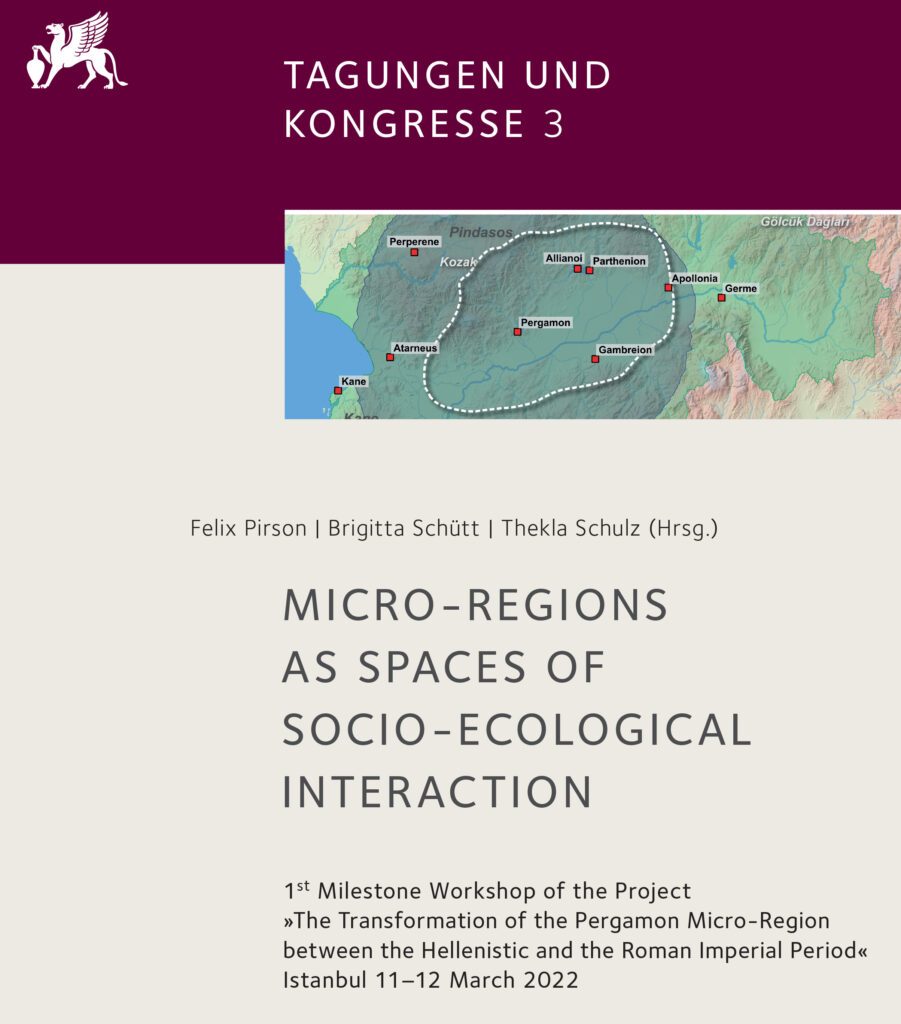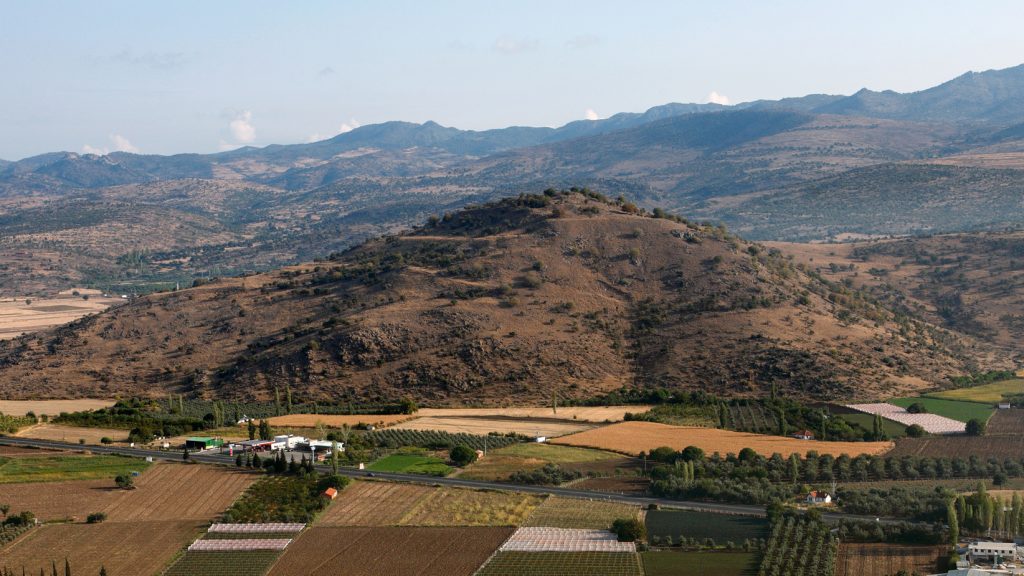Julian Laabs & Daniel Knitter
In collaboration between colleagues from the TransPergMicro project and the Collaborative Research Centre 1266 “Scales of Transformation – Human-Environmental Interaction in Prehistoric and Archaic Societies”, we approached the social ecology of the ancient Pergamon Micro-Region to assess its environmental and social carrying capacity and to gain insights into the transformative potential of land use strategies under changing populations. Based on the population estimates of about 140,000 inhabitants of Pergamon, given by the Greek writer and physician Galen (129 – 216 CE), the question arose if the city and its complementary regions was able to self-sufficient supply its population with the needed food. With an integrative modelling approach and by applying software packages we developed (LandUseQuantifieR (zenodo) and FuzzyLandscapes (zenodo)), a scenario based study of the Pergamon Micro-Region (for the code, see EstimatingLandLabourLimits (zenodo)). It was tested if three suggested complementary regions of Pergamon (Fig. 1) could have supported populations between 20,000 and 200,000 inhabitants by providing enough arable land and if the according populations could have allocated enough labour for the necessary tasks during harvest time of cereals and pulses.

The results show that labour was not a limiting factor for local self-sufficiency. But, the environmental carrying capacity may have been limiting, especially in scenarios with large population sizes. An active investment into the environment, e.g. by the construction of terrace fields for cultivation, could have helped to increase the degree of self-sufficiency. However, it seems plausible that the city of Pergamon and its Micro-Region at some point in time was dependent on food imports from trading partners to sustain a resilient state, that could cope with short-term yield losses. This is surely true for the population numbers given by Galen during the Roman Imperial Period (100 BCE – 375 CE).
Concerning the dynamics of transformations and their patterns the study showed that a socio-ecological framing and integrative analyses of an area is crucial to understand its resilience structure and thus the key aspects that drove transformations. Further, the study provides a reproducible approach to estimate a landscape’s carrying capacity and to model past possible population sizes under different scenarios of diet and land use scenarios.
Original publication: Laabs, J., Knitter, D., 2021. How Much Is Enough? First Steps to a Social Ecology of the Pergamon Microregion. Land 10 (5), 479. DOI: 10.3390/land10050479
The paper is available here: Full Text | PDF Download



